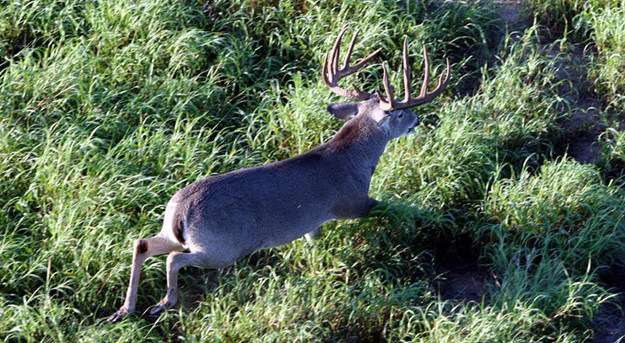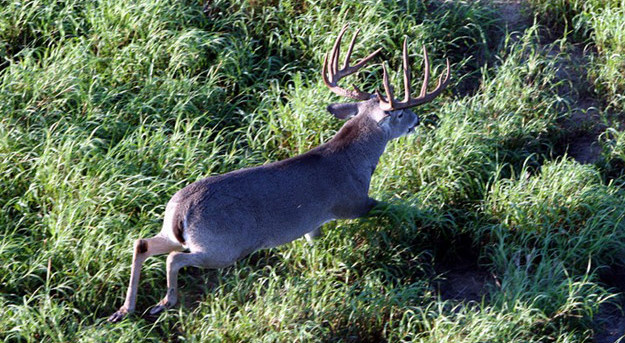White-tailed deer hunting has become a big deal in recent decades. And not just to hunters, but to those that grow and produce quality deer. This increased interested in whitetail and hunting really brought shape to the concept of whitetail deer management. When you get down to it, much of wildlife management is a numbers game. A manager needs to know how many deer are on the property in order to know how many deer should be harvested. This is where deer surveys come into play. The following article discusses helicopter deer surveys and how they can be used for deer management and hunting:
“A survey of deer and other game by helicopter has been a common tool of wildlife managers since the 1970s. Over the years, the Caesar Kleberg Wildlife Research Institute has done considerable research on helicopter surveys. This piece summarizes some of the major findings and the implications for managers. Emphasis is given to south Texas conditions but the information should be useful anywhere helicopter deer surveys are feasible.
The most important finding is that helicopter surveys result in a significant undercount of the deer present on a property. The original research showed that an average of approximately 34 percent of deer are counted. This research was done in 3-seat helicopters, but 4-seaters like the Robinson 44 are commonly used for game surveys today. Because the backseat observers in 4-seaters see some deer that the front seat observers miss, some think the average accuracy is considerably higher. Limited research on 4-seaters shows some improvement in accuracy, maybe averaging 40 percent of deer counted.

As important as accuracy is the variability from count-to-count in game surveys by helicopter. This is an issue that is unseen by most managers because most fly only a single survey per year or season. One year, five helicopter deer surveys were flown on a 5,000 acre portion of the Faith Ranch in one fall season, all between November 4-12. The counts were 159, 79, 116, 85 and 133. This data alone shows that the survey can vary considerably depending on what day you fly, even though there has been no change in the deer population.
Research has also taught us a lot about other deer population statistics commonly collected on game surveys by helicopter. Sex ratios are unbiased, meaning that there is no tendency to count more does or more bucks versus the other sex. However, sex ratios can be variable from flight to flight. Fawns tend to be undercounted even more that adult deer, perhaps as much as 30 percent. Thus, if a particular flight results in 40 percent of adults seen, perhaps only 28 percent of fawns will be counted. Commonly, managers and biologists classify bucks into categories like small, medium, and mature. These categories may vary from flight to flight but bucks are encountered at random. Some believe that mature bucks are less likely to be counted versus younger bucks. Research has shown this is not true.
A common issue that arises is whether to survey by helicopter in the fall or winter, or both. Commonly (but not always) more deer are observed in the winter when visibility is greater because of leaf fall from the brush. The weather may be cooler making deer more likely to flush from the helicopter and be counted. Winter helicopter deer surveys may average as many as 67% of deer counted. However, count variability is still likely and fawns can be harder to classify. Also, a few bucks may drop antlers right after deer hunting season, as early as January in some years. My personal preference is for a single fall flight and no winter count.
So, with the deer missed from a helicopter, and the variability from flight-to-flight, how should a manager use survey information? First, a harvest rate should not be calculated off a single survey. If the goal is to harvest 10 percent of the number counted, this would result in 16 deer if the survey was on November 4 or 8 deer if it was done on November 5, a 100% difference! If you must calculate a percentage of the survey, I prefer averaging the three most recent surveys to smooth some of the variability.
However, it is much better to use the helicopter deer survey as trend data through time and use some other benchmark for harvest. For example, some managers will not harvest more than one trophy buck per 1,000 acres. Such benchmarks can be set for the individual property and adjusted depending on the helicopter survey data trend through time.
Helicopter surveys are a powerful and useful tool in whitetail deer management. However, their strong and weak points should be recognized and the data used properly in wildlife management. Helicopter surveys also provide a manager with other important information. For example, tallies of quail coveys flushed are a good index to quail populations. In drought years, few or no coveys may be flushed, whereas wet years result in many coveys encountered. The most important value of helicopter surveys may be intangibles. That is, the flights give managers a quick overall impression of the condition of the habitat, game populations, and other factors affecting wildlife management.”
This article is written by Charlie DeYoung and was reprinted courtesy of Caesar Kleberg Wildlife Research Institute. Visit the CKWRI Deer Research Program web site for more information. Charlie DeYoung is a research scientist and professor emeritus at Caesar Kleberg Wildlife Research Institute and was instrumental in establishing the Institute. His interest include habitat and white-tailed deer management.
